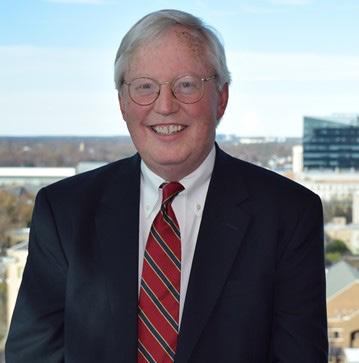
10 minute read
CELBRATING JUDGE ROBERT RADER
CELEBRATING JUDGE ROBERT RADER
ON AUGUST 31, Chief District Court Judge Robert Rader will be retiring after 26 years on the bench, the longest serving District Court Judge in the history ofWake County. WCBA recently asked his son, Rob Rader, an attorney with the Raleigh firm of Miller, Monroe & Plyler, to interview his father regarding the Judge’s career and changes he has encountered during his years of service.
Advertisement
ROB RADER:
JUDGE RADER:
What was your first encounter with the Wake County court system and how has it changed?
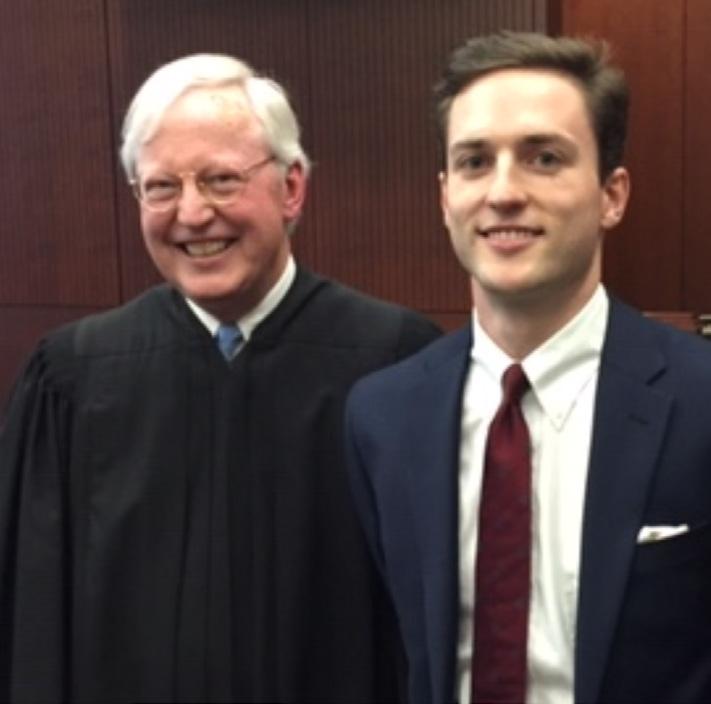
Well fortunately, my first encounter was not as a defendant. I was an undergraduate at N.C. State in the mid-1970s when I did a brief internship in the District Attorney’s Office under the auspices of Assistant D.A. Rusty Sherrill. The elected district attorney at the time was Randolph Riley, and there were many notable Raleigh attorneys who were beginning their careers as assistant D.A.’s, some who later became jurists including, Rusty Sherrill, Joy Hamilton, Mike Payne, Narley Cashwell and many others.
Having no legal training at the time, my primary task was to perform record checks on defendants. Russell Nipper was the Clerk of Court, and there was no internet or electronic database of criminal records. The entire Clerk’s Office was housed on the first floor of the courthouse where the civil division is now housed.
Interestingly, the Sheriff’s Office was housed across the lobby where courtroom 1A is situated, and the entire jail for Wake County was on the fifth floor. The clerk maintained a series of file cabinets with note cards much like libraries used to maintain card catalogs. Each defendant had a note card with their name and convictions typed on the card. I would pull the cards to provide the attorneys with the criminal record.
Of course, today numerous electronic databases exist and criminal records can be accessed with just a few keystrokes on the computer. This is just one example of the many changes that have occurred over the years.
ROB RADER:
JUDGE RADER:
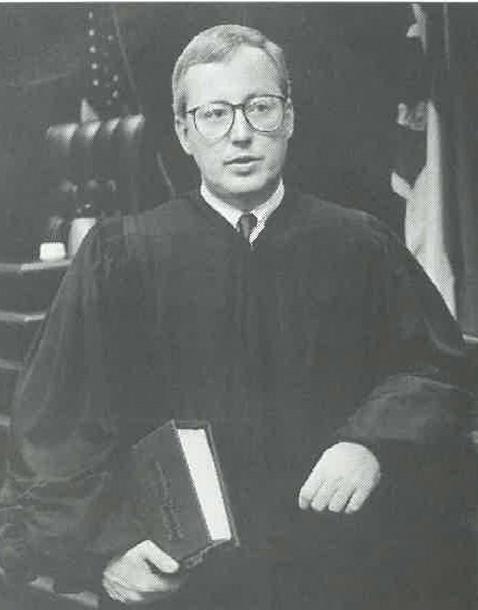
You were appointed to the District Court bench in 1994. What changes have you noticed to the court during your tenure as a jurist?
When I took the oath of office on September 1, 1994, there were 12 District Court judges with one of those seats having just been created. Today we operate 18 District Court courtrooms daily. In January 2021, we will have 20 District Court judges in Wake County.
In 1994, each judge rotated through all of the various courts weekly with the exception of juvenile court. The variety of subject matter was beneficial in some respects in that it decreased burnout and assured familiarity with the various areas of law. Today, District Court is much more specialized, particularly in the larger urban districts, with the creation of Family Court and the implementation of best practices in the areas of domestic, domestic violence, juvenile, DWI, etc. The one judge-one family approach is a substantial change in the way domestic court is conducted.
In 1994, there were two IBM laptop computers in the District Court Judges’ Offices. Naturally, they went to the two senior judges. Most judges dictated their orders or wrote them out by hand to be typed by our judicial assistant, Mimi Root. Today, every judge is well-equipped with laptops and virtually all are accustomed to generating their own orders.
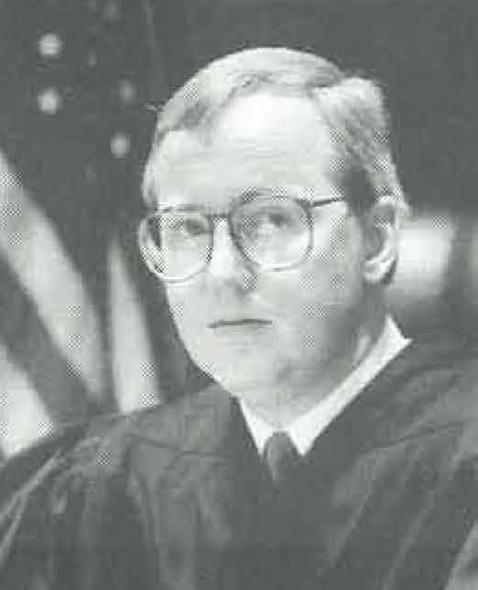
Advancements in technology, which have allowed online calendars in domestic court, the automated filing system for ex parte domestic violence protection orders, e-citations, automated court date notification system, etc., have been giant leaps from the way the courts used to do business when I first started. The advent of administrative traffic courts and therapeutic recovery courts have also been huge advancements. The list of changes could go on and on.
ROB RADER:
JUDGE RADER:

A major change during your time on the bench was the creation of the Wake County Justice Center. Can you speak to what that project meant to you and its impact on the courts and Wake County?
In reflection, it is important to remember that Wake County has been served by a courthouse in the same location on Fayetteville Street since 1795. The completion of the Wake County Justice Center in 2013 marked the first time that our county has been served by two separate judicial facilities.
I can honestly say that my work on the Justice Center is one of the accomplishments that I am most proud of. We were blessed with a wonderful team of court and county officials that comprised the Project Steering Committee, and it was definitely a team effort from day one.
I have been extremely fortunate to work with Wake County officials on two separate construction projects: Historic Yates Mill County Park and the Justice Center. In doing so, I quickly came to realize how fortunate we are in Wake County to have such competent and dedicated public servants at the helm of county government, particularly in the positions of county manager, GSA directors and facilities design and construction.
I am satisfied that we achieved our primary goal with the Justice Center of creating a very functional, technologically advanced, state-of-theart facility. And, don’t forget there are 17 elevators in the Justice Center! Hopefully the attorneys, judges, court personnel and public will benefit from this facility for many years to come.
ROB RADER:
JUDGE RADER:
In 2012, the N.C. Bar Association began conducting Judicial Performance Evaluations of trial court judges in North Carolina. You received the highest score of any judge in the state in 2012 and second highest in 2016. To what do you attribute these high scores?
In the words of former District Court Judge George R. Greene, “Even a blind hog finds an acorn every now and then.” The JPE rating was definitely a nice shiny acorn, but I don’t read too much into it.
I do acknowledge that it was an honor and very humbling to receive that vote of confidence from my fellow members of the legal profession. I honestly believe that a judge’s stature among the bar is based almost as much on how he or she treats and interacts with people as it is their legal abilities.
The Golden Rule has been a bedrock principle for me throughout my life. People should be treated with kindness and respect regardless of their position in life and regardless of one’s own personal perceptions or feelings toward them. Most litigants and parties that I encounter just want to be heard and have their day in court. There have been many occasions where I have ruled against an individual, but they thanked me and left the courtroom feeling like they were heard.
Honestly, I think judges should not worry about scores or ratings but should be focused on being fair and impartial, patient, humble, eventempered, staying abreast of the law, displaying a strong work ethic, conducting themselves in a manner than reflects positively upon the courts, following the law and treating people with respect.
ROB RADER: JUDGE RADER:
In light of the COVID-19 pandemic, what have been the biggest challenges for the court system over the past few months?
The COVID-19 pandemic has substantially changed the way the courts operate and essentially consumed our lives since March of this year. In the past, court officials and staff cringed at the thought of closing most of our courtrooms for one week as we do each year during the Summer Judges Conference.
Continuing cases out and creating any backlog is obviously something that should be avoided if at all possible. The thought of closing most courtrooms for a period of 11 weeks was simply incomprehensible, yet that is exactly what we did when the pandemic forced us to drastically reduce our court operations for 11 weeks from March 16 to June 1. Needless to say, this will result in a huge backlog of cases, which will prove challenging for the foreseeable future.
Most court officials are familiar with how to operate courts, but not how to do so on a small scale. The initial challenge was how to close most courts but maintain essential services and be in a position to hear time-sensitive matters, emergency claims for relief and matters where defendants were in custody. The next challenge was being able to communicate the plans and processes to the public and the members of the bar in a concise and timely manner.
As we progressed, the challenge shifted to how to expand operations in a manner that is safe for all involved. Developing safety protocols and policies, plans for expansion and operation of both civil and criminal courts, implementing social distancing practices, etc., consumed a tremendous amount of time.
We continue to struggle with the challenge of how to reduce the size of dockets on a daily basis. Throughout the pandemic, we have also faced the challenges of trying to utilize new technology and implement remote hearings where feasible without any rules or infrastructure for doing so. The challenges faced from the pandemic are clearly unprecedented and hopefully something that future court officials will never have to encounter.

THE RADER FAMILY IN 1996
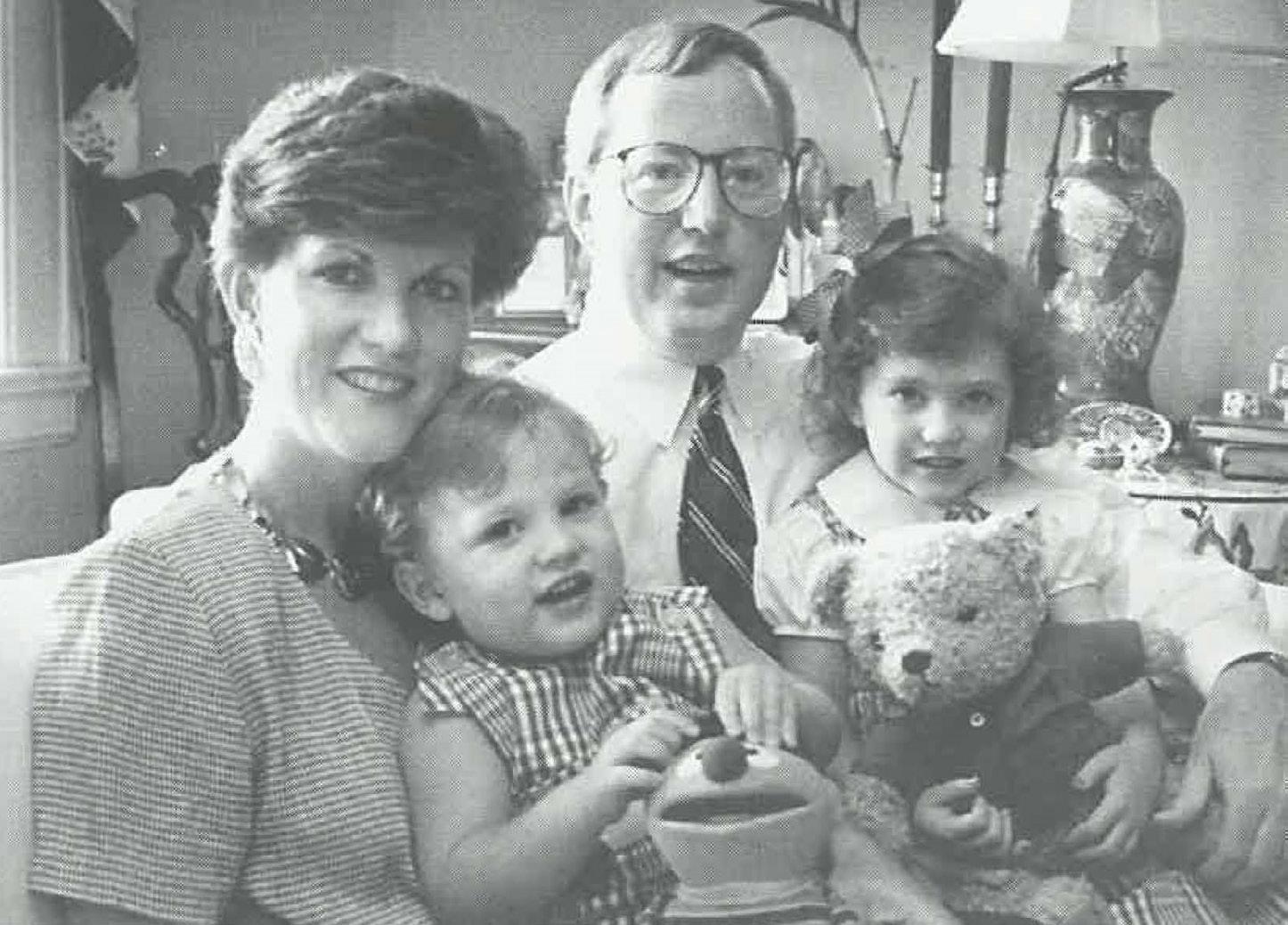

ROB RADER: JUDGE RADER:
What changes in the court system over the past few months do you envision remaining with us well past the pandemic?
If there is a bright side for the courts from the pandemic, it will be that judges and court officials were forced to think outside the box and explore news ways of administering justice. The most obvious example will be the continued use of technology to conduct remote hearings, meetings, trainings, etc.
Judges and attorneys have been forced to become proficient with WebEx, Zoom and other platforms to conduct remote hearings. This technology has proved very effective for civil motions hearings, custody mediations, juvenile abuse neglect and dependency hearings, and civil commitment hearings. I anticipate this technology will continue to be utilized long after the pandemic. A clear example is the use of remote hearings for summary judgment divorces by attorneys. This method has proved to be so efficient and popular among the practicing bar that it has become the new way of doing business.
These technological changes are actually coming at a good time for the courts since, in 2021, Wake County will be one of two judicial districts to begin implementation of the new eCourts system. This will be a major technological transformation of the court system, which will allow attorneys to file documents electronically, access files and case information online, pay court fees online and much more.
ROB RADER:
JUDGE RADER:
How do you envision things changing for you personally after you leave the bench in September?
I will miss the courtroom and daily interaction with lawyers and court personnel the most, but I am looking forward to a break from the daily demands and stress of the job. Thirteen years is a long time to serve as Chief District Court Judge in a large urban district such as Wake.
I decided some time ago not to commit to any new opportunities for the first six months after my departure from the bench. I plan to continue my service on the State Bar Council and will obviously stay active with the WCBA. I have several projects I am looking forward to working on along with spending more time in the mountains.
My timing is also a bit strategically planned as the annual stocking of trout begins in early fall in the hatchery-supported trout streams in the mountains of North Carolina. I look forward to honing my fly-fishing skills in hopes of someday being able to cast like Howard Cummings. WBF
